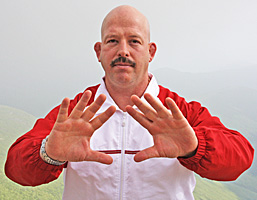Throughout the ages the great ones disagree on a number of topics, but when it comes to the use of your imagination and the power of your thoughts, they get into single file.
“Imagination is more important thank knowledge.” – Albert Einstein
“You can’t depend on your eyes when your imagination is out of focus.” – Mark Twain
“Imagination is the elixir of life.” – P.T. Barnum
“The power of imagination makes us infinite.” – John Muir
I can go on and on with examples such as these, but perhaps my favorite is the way my wife would say it:
“No imagination – no food.”
Oh yes, the naysayers scramble, sneer and squirm as they opine: “You really think your imagination helps you create what you want? How can it do so.”
These questions, incidentally, are from the same people who scoff about the importance of breathing, as if your very life doesn’t depend upon it.
The mere questioning of the power of imagination shows a clear misunderstanding and ignorance of how the human brain works. What the scoffers are essentially saying is, “I don’t think my brain has anything to do with anything I do.”
They’re also revealing, without realizing it, that they have no idea what a hippocampus is, or the frontal lobes, or where their memories and knowledge are stored.
My favorite line is when the sneerers say, “I don’t think about it. I just do it.”
Really?
So you took action without any thought whatsoever?
How is that possible? Explain that one to me so I can present it to my neighbor, who happens to be a neuroscientist.
Another great line comes from those who study Eastern thought: “You teach all this self-image stuff – but the reality is there is no self.”
To this statement I reply: “Is there a spirit or a soul?”
“Oh yes, you have a spirit and a soul. There just isn’t a self.”
“Great, so call it soul-image if that makes you feel better.”
To recap, these so-called intellectuals believe your imagination doesn’t serve a valuable purpose, it’s just loitering in the lobby of your brain. Deep breathing is not important because you can survive on very shallow breaths. And best of all, there is no self.
Let me give you the straight scoop from personal and professional experiences, wherein I’ve succeeded at a high-level in several endeavors:
When you are blocked, when you can’t seem to achieve, when you can’t get good grades, when you can’t get yourself to take action, when you don’t believe you can get physically fit or accomplish something BIG – you need a revamping of your imagination.
Jump into action all you want. Use your will power as much as you can.
And soon, you’ll run out of steam and be out of gas.
With your use of IMAGINATION, however, you tap into the seemingly infinite and unlimited powers of the brain.
Show me the mental images you have ruminating in your brain and I’ll easily and accurately predict where you’re heading in life.
Let me hear the way you speak about yourself and your life and I’ll quickly ascertain the type of results you can expect to achieve.
I’ll close now by repeating my wife’s line, which really should be a Chinese Proverb:
“No imagination – no food.”
Matt Furey
P.S. Want to learn how to use your imagination in a way that puts the food you want on your table, the kind of clothes you want on your body, and the kind of home you want to house yourself and your family? This is a small part of what will be revealed at The Undiscovered, Unrevealed and Unparalleled Secrets Seminar being held in February. I look forward to seeing you there.


